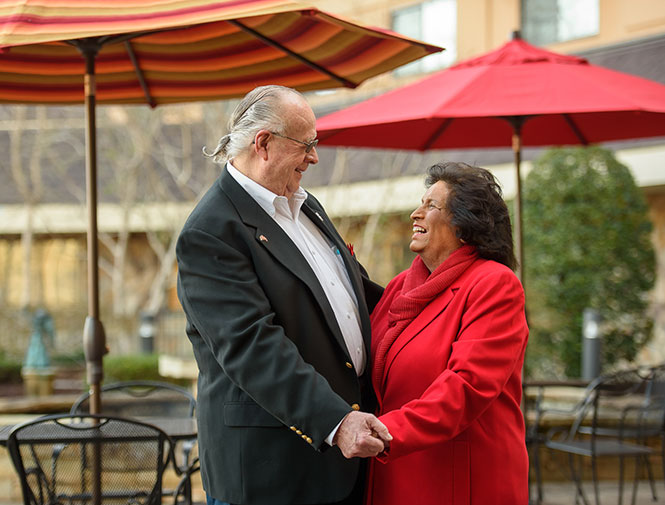Century Park Blog

Post-traumatic stress disorder (PTSD) was first officially recognized in the 1980s. Many have now heard the term PTSD at some point. However, few can identify those suffering and the symptoms that impact them. With June being National PTSD Awareness Month, it is the perfect time to gain more understanding on the illness. When reflecting on our senior community, think of how many lived a huge portion of their lives without understanding, proper diagnosis, or treatment. This month, let us reemphasize the importance of mental health.
What is PTSD?
To understand PTSD, we must first understand trauma. Abuse, car accidents, loss of loved ones, or life-threatening careers are just a few of the many traumas one could experience. When a person is unable to process and heal from the traumatic event, PTSD can develop. Imagine how many of our senior population experienced childhood trauma, served during wartime, or experienced domestic abuse that was never addressed. For some of our veterans the war they fought never ends.
PTSD is an emotional or psychological wound manifesting itself in flashbacks, disassociations, sleep problems, nightmares, panic attacks, change in appetite, change in mood or behavior, and isolation. These symptoms can occur or increase when triggered by stimuli such as sights, smells, or sounds that remind the brain of the traumatic event. The person then has a physical and emotional response to feeling unsafe or threatened. Powerful emotions of fear, irritability, anger, or guilt can result. These symptoms can reoccur over a lifetime if the traumatic incident is never processed.
How to support a senior with PTSD?
When caring for a senior who suffers from PTSD, there can be triggering moments which cause past emotional wounds to weep. It is important to remain empathetic and understand they are reacting to the brain reliving the most horrible part of their life. Do not take an emotional outburst personally. A senior could also have cognitive decline, which could worsen symptoms and increase confusion. It is important to learn known triggers and grounding techniques that work best for the individual. A grounding technique could be as simple as encouraging deep breathing or asking the individual to name items around them.
Families and care givers should communicate openly to create a care plan. There are options for treatment such as psychotherapy, eye movement desensitization and reprocessing (EMDR), medication, and holistic therapies.
Support groups can also be extremely beneficial. Many seniors rely on family members or care givers for their primary source of socialization. Those suffering from trauma may isolate those closest to them, worsening their depression. Being able to speak openly and relate to others who have similar traumatic experiences is a great start to healing.
I would like to encourage each of us to imagine what your day would look like if you struggled with PTSD. What event caused the traumatic response? What are some triggers you could encounter on a typical day? If the event were serving during wartime, some of your triggers could be seeing a news report of an attack, hearing loud noises, the smell of fire, or the feel of sand in your clothes. With that in mind, think of how you can aid someone struggling today.
Are there treatment options?
It is important to know that you do not have to deal with trauma alone. There are options for treatment such as psychotherapy, eye movement desensitization and reprocessing (EMDR), medication, holistic therapies, and grounding techniques. What works best for one person may not be the best option for another. It is important to explore treatment options and find what works best for the present symptoms. During my time working in mental health, I saw many begin treatment at the lowest point of their lives. What astounded me was how they rose to be hopeful healing people after they had the opportunity to process their pain in a safe environment and learn positive coping mechanisms. Above all, it is important to have faith over fear that you can overcome trauma!



